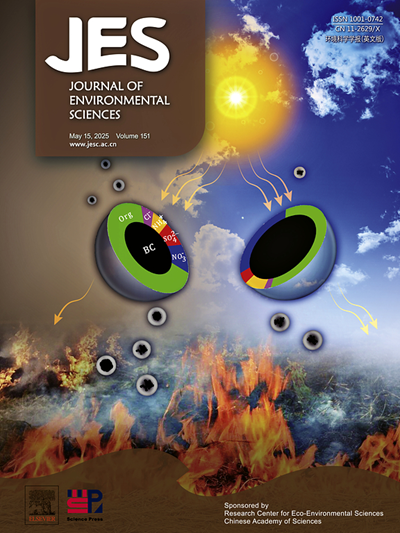Environmental catalytic city: New engine for air pollution control
IF 5.9
2区 环境科学与生态学
Q1 ENVIRONMENTAL SCIENCES
引用次数: 0
Abstract
Air pollution is a major challenge to the improvement of urban environmental quality. The control of air pollution still faces severe challenges, especially in developing countries, such as ozone pollution control. Ozone is a typical secondary air pollutant, and its formation chemistry from its precursors (NOx and volatile organic compounds) is highly nonlinear, which caused the emission reduction of its precursors is not always effective and therefore new assisted approaches to control of ozone pollution are needed. Photocatalysis and ambient catalysis technology are expected to be applied in open atmosphere as a new booster to the direct purification of air pollutants in emission sources. In this perspective, we summarize the current knowledge about the photocatalysis and ambient catalysis technology for the removal of air pollutants under natural photothermal conditions. Based on these technologies, we propose the concept of “Environmental Catalytic City”, which refers to the spontaneous purification of low concentration urban air pollutants in the atmosphere by catalytic materials coating on the artificial surfaces, such as building surfaces in the city. In this way, the urban city with self-purification function can remove air pollution without additional energy consumption. The further improvement, development, and application of the “Environmental Catalytic City” is also discussed.

环境催化城市:大气污染治理的新引擎
大气污染是城市环境质量改善面临的重大挑战。空气污染的控制仍然面临严峻的挑战,特别是在发展中国家,例如臭氧污染的控制。臭氧是一种典型的二次大气污染物,其前驱体(NOx和挥发性有机化合物)的形成化学高度非线性,导致其前驱体的减排并不总是有效的,因此需要新的辅助控制臭氧污染的方法。光催化和环境催化技术有望作为直接净化排放源大气污染物的新助推器在开放大气中得到应用。从这个角度,我们总结了目前光催化和环境催化技术在自然光热条件下去除空气污染物的知识。基于这些技术,我们提出了“环境催化城市”的概念,即通过在城市建筑表面等人造表面涂覆催化材料,对大气中低浓度的城市空气污染物进行自发净化。这样,具有自净功能的城市可以在不增加能源消耗的情况下去除空气污染。并对“环境催化城市”的进一步完善、发展和应用进行了探讨。
本文章由计算机程序翻译,如有差异,请以英文原文为准。
求助全文
约1分钟内获得全文
求助全文
来源期刊

Journal of Environmental Sciences-china
环境科学-环境科学
CiteScore
13.70
自引率
0.00%
发文量
6354
审稿时长
2.6 months
期刊介绍:
The Journal of Environmental Sciences is an international journal started in 1989. The journal is devoted to publish original, peer-reviewed research papers on main aspects of environmental sciences, such as environmental chemistry, environmental biology, ecology, geosciences and environmental physics. Appropriate subjects include basic and applied research on atmospheric, terrestrial and aquatic environments, pollution control and abatement technology, conservation of natural resources, environmental health and toxicology. Announcements of international environmental science meetings and other recent information are also included.
 求助内容:
求助内容: 应助结果提醒方式:
应助结果提醒方式:


